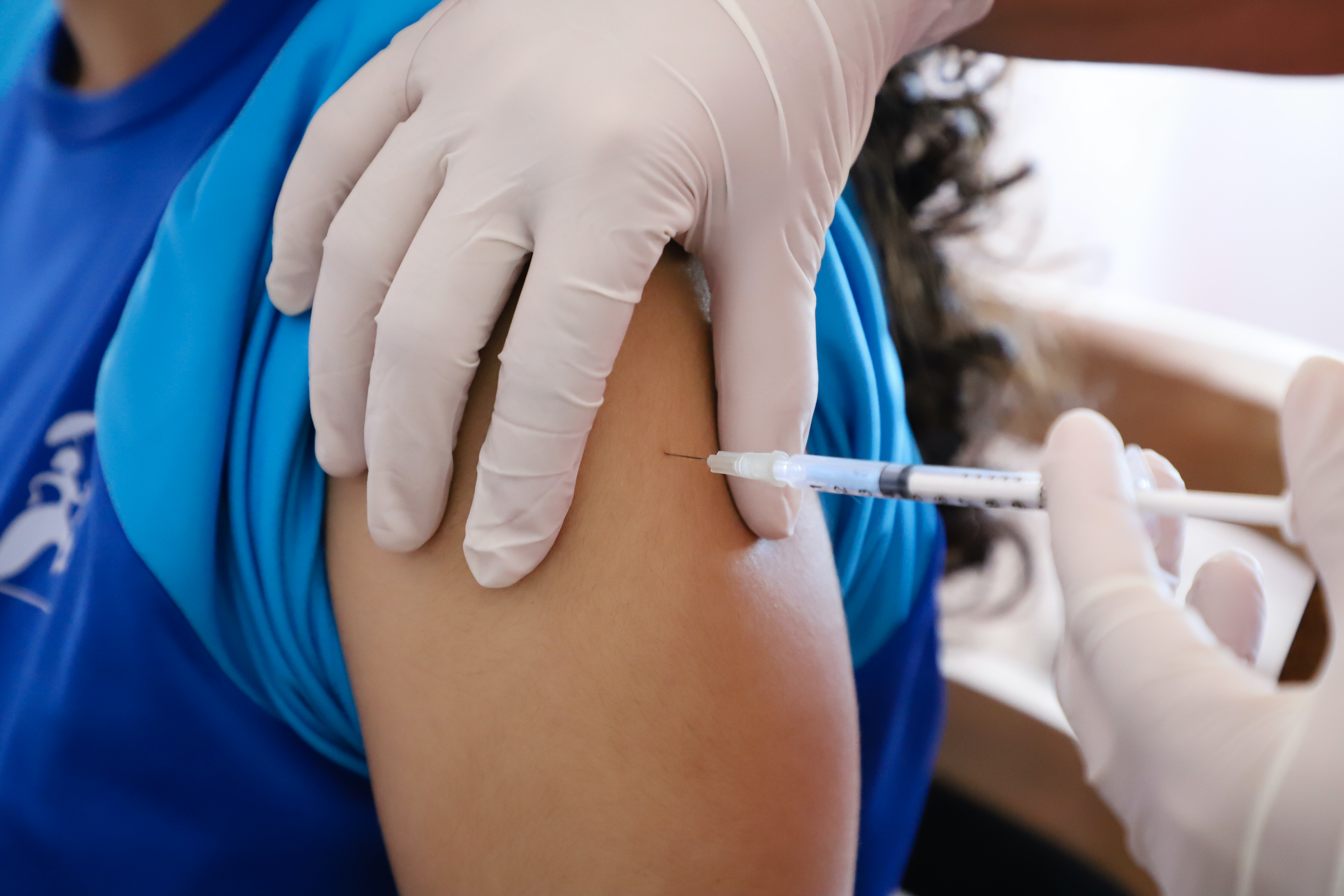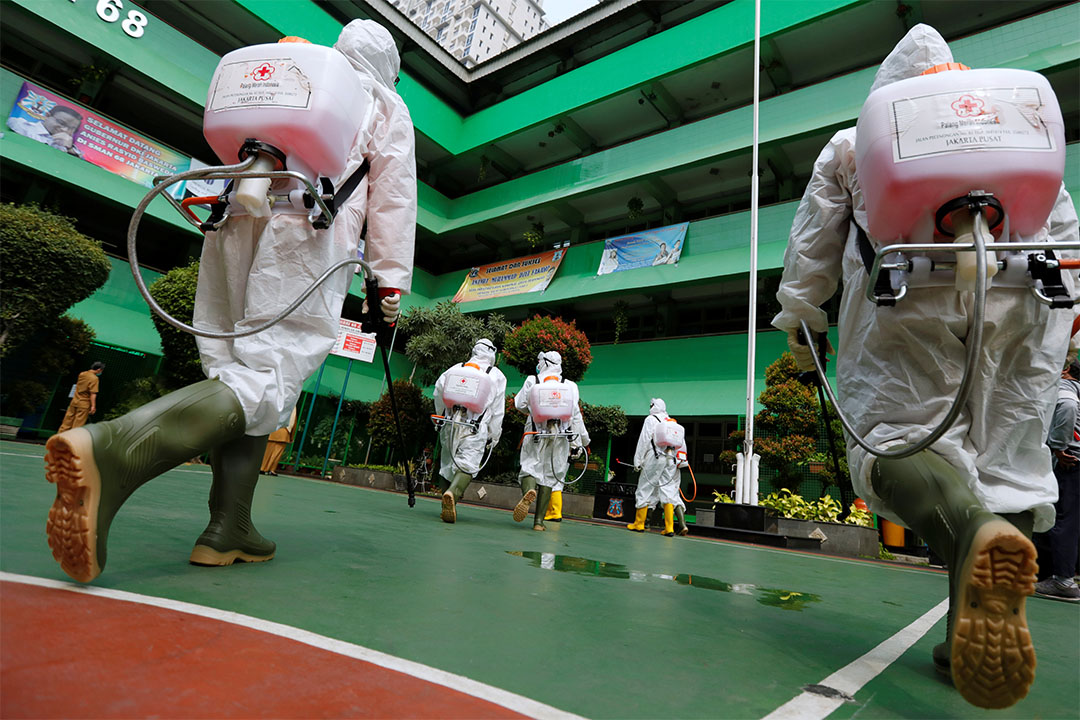
Science’s COVID-19 reporting is supported by the Pulitzer Center and the Heising-Simons Foundation.
When the number of COVID-19 cases began to rise again in Manaus, Brazil, in December 2020, Nuno Faria was stunned. The virologist at Imperial College London and associate professor at the University of Oxford had just co-authored a paper in Science estimating that three-quarters of the city’s inhabitants had already been infected with SARS-CoV-2, the pandemic coronavirus—more than enough, it seemed, for herd immunity to develop. The virus should be done with Manaus. Yet hospitals were filling up again. “It was hard to reconcile these two things,” Faria says. He started to hunt for samples he could sequence to find out whether changes in the virus could explain the resurgence.
On 12 January, Faria and his colleagues posted their initial conclusions on the website virological.org. Thirteen of 31 samples collected in mid-December in Manaus turned out to be part of a new viral lineage they called P.1. Much more research is needed, but they say one possibility is that in some people, P.1 eludes the human immune response triggered by the lineage that ravaged the city earlier in 2020.
Emerging variants of the coronavirus have been in the news ever since scientists raised the alarm over B.1.1.7, a SARS-CoV-2 variant that first caught scientists’ attention in England in December and that is more transmissible than previously circulating viruses. But now, they’re also focusing on a potential new threat: variants that could do an end run around the human immune response. Such “immune escapes” could mean more people who have had COVID-19 remain susceptible to reinfection, and that proven vaccines may, at some point, need an update.
At a World Health Organization (WHO) meeting on 12 January, hundreds of researchers discussed the most important scientific questions raised by the wave of new mutations. WHO also convened its COVID-19 Emergency Committee on 14 January to discuss the impact of the new variants and the travel restrictions that many countries are imposing to contain them. The committee called for a global effort to sequence and share more SARS-CoV-2 genomes to help track mutations. It also asked countries to support “global research efforts to better understand critical unknowns about SARS-CoV-2 specific mutations and variants.”
The more transmissible variant, B.1.1.7, is already spreading rapidly in the United Kingdom, Ireland, and Denmark, and probably in many other countries. The U.S. Centers for Disease Control and Prevention released a modeling study on Friday showing the strain could become the predominant variant in the United States in March. But scientists are just as worried about 501Y.V2, a variant detected in South Africa. Some of the mutations it carries, including ones named E484K and K417N, change its surface protein, spike, and have been shown in the lab to reduce how well monoclonal antibodies combat the virus. In a preprint published earlier this month, Jesse Bloom, an evolutionary biologist at the Fred Hutchinson Cancer Research Center, showed that E484K also reduced the potency of convalescent sera from some donors 10-fold—although he is quick to add this does not necessarily mean the mutation would cause people’s immunity to the new strain to drop 10-fold.
P.1 adds to the concerns because it appears to have hit on a similar constellation of mutations and has emerged in a place with a high level of immunity. “Anytime you see the same mutations arising and starting to spread multiple times, in different viral strains across the world, that’s really strong evidence that there’s some evolutionary advantage to those mutations,” Bloom says.
Like B.1.1.7, the variant identified in Manaus is already on the move. Just as Faria was finishing his analysis of the Brazilian genomes, a report was published of a variant detected in travelers arriving in Japan from Brazil—and it turned out to be P.1.
Bad friends
How these new variants are affecting the course of the pandemic is still unclear. In Manaus, for example, P.1 might have nothing to do with the new surge in infections; people’s immunity might simply be waning, says Oxford epidemiologist Oliver Pybus. In a press conference today, WHO’s Mike Ryan cautioned that changes in human behavior are still the major driving force for the resurgence. “It’s too easy to just lay the blame on the variants and say it’s the virus that did it,” he said. “Unfortunately, it’s also what we didn’t do that did it.”
Even if the variant plays a crucial role it might be driving the boost because it is transmitted more easily, like B.1.1.7, not because it can evade the immune response. “Of course it could be a combination of these factors, too,” Pybus says. Similarly, in a recent modeling study, researchers at the London School of Hygiene & Tropical Medicine calculated that South Africa’s 501Y.V2 variant could be 50% more transmissible but no better at evading immunity, or just as transmissible as previous variants but able to evade immunity in one in five people previously infected. “Reality may lie between these extremes,” the authors wrote.
Ester Sabino, a molecular biologist at the University of São Paulo, São Paulo, is launching a study to find reinfections in Manaus that could help decide between these hypotheses for P.1. She is also working to sequence more samples from Manaus from January to follow the variant’s spread. “We don’t have the data yet, but my guess is, it will be at 100% now,” she says. Lab studies investigating the variants are also underway. The United Kingdom today launched a new consortium, G2P-UK (for “genotype to phenotype-UK”), headed by Wendy Barclay of Imperial College London, to study the effects of emerging mutations in SARS-CoV-2. One idea discussed at the 12 January WHO meeting is to set up a biobank that would aid studies by housing virus samples, as well as plasma from vaccine recipients and recovered patients.
Interactions between the new mutations may make it harder to tease out their effects. The variants from the United Kingdom, South Africa, and Manaus all share a mutation named N501Y, for instance, or Nelly, as some researchers call it. But the mutation, which affects the spike protein, also occurs in some variants that do not spread faster, suggesting N501Y does not operate alone, says Kristian Andersen of Scripps Research: “Nelly might be innocent, except maybe when she’s hanging with her bad friends.”
Bloom thinks none of the changes is likely to let the virus escape the immune response entirely. “But I would expect that those viruses have some advantage when a lot of the population has immunity”—which might help explain the surge in Manaus.
Vaccine updates
So far, the virus does not appear to have become resistant to COVID-19 vaccines, says vaccinologist Philip Krause, who chairs a WHO working group on COVID-19 vaccines. “The not-so-good news is that the rapid evolution of these variants suggests that if it is possible for the virus to evolve into a vaccine-resistant phenotype, this may happen sooner than we like,” he adds. That possibility adds to the urgency of putting good surveillance in place to detect such escape variants early on, says biostatistician Natalie Dean of the University of Florida. But it also adds to the urgency of vaccinating people, says Christian Drosten, a virologist at Charité University Hospital in Berlin. “We have to do everything we can now to vaccinate as many people as fast as possible, even if that means running the risk of selecting for some variants,” he says.
If vaccine-resistant SARS-CoV-2 strains emerge, vaccines might need to be updated. Several vaccines could be easily changed to reflect the latest changes, but regulators might balk at authorizing them without seeing updated safety and efficacy data, Krause says. If new variants circulate alongside older strains, multivalent vaccines, effective against several lineages, might even be needed. “To be clear: These are downstream considerations,” Krause says. “The public should not think that this is imminent, and that new vaccines will be needed.” But Ravindra Gupta, a researcher at the University of Cambridge, says manufacturers should start to produce vaccines designed to generate immunity to mutated versions of the spike protein, because they keep cropping up. “It tells us that we should have these mutations in our vaccines, so that you shut off one of the avenues for the virus to go down.”
For now, increased transmissibility is the biggest worry, says virologist Angela Rasmussen of Georgetown University. “I’m puzzled why [that] isn’t a bigger part of the conversation,” she says. The U.S. hospital system, she says, “is at capacity in many places and further increases in transmission can tip us over the edge where the system collapses. Then we’ll start seeing potentially huge increases in mortality.”
COVID-19 Update: The connection between local and global issues–the Pulitzer Center's long standing mantra–has, sadly, never been more evident. We are uniquely positioned to serve the journalists, news media organizations, schools, and universities we partner with by continuing to advance our core mission: enabling great journalism and education about underreported and systemic issues that resonate now–and continue to have relevance in times ahead. We believe that this is a moment for decisive action. Learn more about the steps we are taking.








